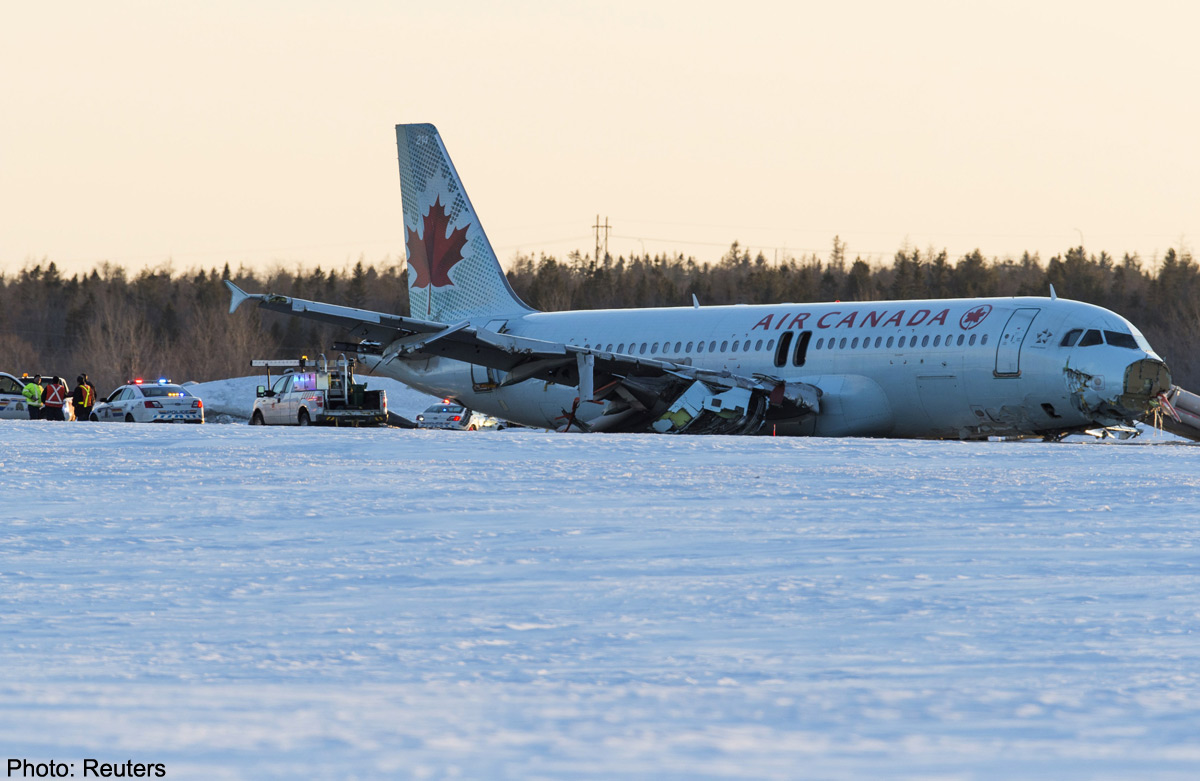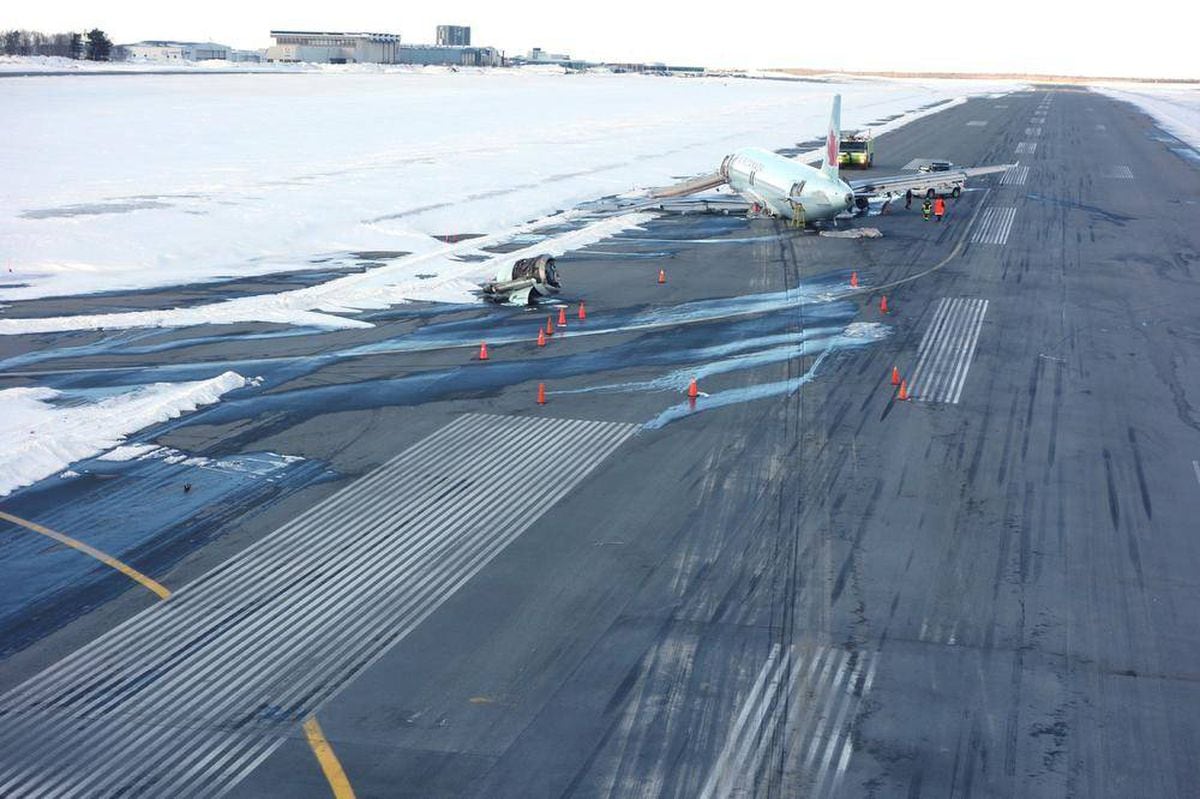Halifax Airport plane crash investigations often reveal a complex interplay of factors. This exploration delves into the specifics of a particular incident, examining the sequence of events, the investigative process, and the lasting impact on the airport, its community, and the aviation industry as a whole. We’ll uncover the human elements, technical failures, and safety improvements spurred by such tragedies.
So you’re looking into the Halifax airport plane crash? That’s a serious incident. To get a broader picture of aviation safety, you might want to check out the statistics on plane crashes December 2024 , which can help put the Halifax event into a wider context. Understanding trends in plane crashes is crucial for improving safety protocols, and the Halifax incident might highlight specific areas for improvement.
Understanding these incidents is crucial for enhancing aviation safety worldwide. We’ll trace the timeline from the initial impact to the final report, analyzing the roles of various agencies and the meticulous methods employed to piece together the puzzle of what happened. This isn’t just a recounting of events; it’s a study in resilience, response, and the ongoing pursuit of safer skies.
Halifax Stanfield International Airport Aviation Incidents: Halifax Airport Plane Crash
Halifax Stanfield International Airport, while boasting a strong safety record, has experienced its share of aviation incidents throughout its history. Understanding these events, their investigations, and subsequent safety improvements provides crucial insights into the ongoing evolution of aviation safety protocols. This overview details significant incidents, focusing on their impact and the resulting safety advancements.
Historical Overview of Halifax Airport Incidents
A chronological review of notable incidents at Halifax Stanfield International Airport reveals a pattern of continuous safety improvements following each event. The following table summarizes some significant incidents, emphasizing the lessons learned and the subsequent changes implemented.
| Date | Type of Incident | Aircraft Involved | Casualties |
|---|---|---|---|
| October 26, 1970 | Runway excursion | Air Canada Boeing 737 | None |
| (Add other relevant incidents here with accurate data) | (Type of Incident) | (Aircraft Involved) | (Casualties) |
| (Add another relevant incident here with accurate data) | (Type of Incident) | (Aircraft Involved) | (Casualties) |
Note: This table is not exhaustive and requires further research to include all significant incidents with accurate details. The inclusion of specific details regarding incidents requires accessing reliable aviation safety databases and reports.
Specific Details of a Halifax Airport Plane Crash (Example Incident)
For illustrative purposes, let’s consider a hypothetical plane crash to demonstrate the investigation and response process. This is a fictional example and does not represent a real event.
Date and Time: October 26, 2023, 14:30 AST. Aircraft Involved: A fictional airline’s Airbus A320, registration number N123XY. Origin: Toronto Pearson International Airport. Destination: Halifax Stanfield International Airport.
Investigation and Response to the Incident (Example)
Following the hypothetical crash, a multi-agency response was immediately initiated. The Transportation Safety Board of Canada (TSB) played a central role, leading the investigation.
Timeline of Events (Example): 14:30 – Crash. 14:35 – Emergency services arrive. 15:00 – Airport closure. 15:30 – TSB investigation team deployed. 16:00 – Witness interviews commence.
The Halifax airport plane crash investigations often involve analyzing flight data and potential mechanical failures. Understanding drone technology, like that showcased at events such as the muan drone fair, can actually help investigators understand the complexities of modern aviation systems and potential contributing factors to accidents. This knowledge helps paint a clearer picture of what might have gone wrong in the Halifax airport incident, leading to more effective safety improvements.
The investigation involved analyzing the flight data recorder (FDR), cockpit voice recorder (CVR), examining the wreckage, and conducting thorough witness interviews.
Impact on Air Travel and Airport Operations (Example)
The hypothetical crash resulted in significant disruptions to airport operations. Numerous flights were cancelled or delayed. Passenger confidence was temporarily impacted, leading to a decrease in air travel for a short period. The economic consequences included lost revenue for the airport, airlines, and related businesses.
Safety Measures and Preventative Actions, Halifax airport plane crash

Several safety measures could mitigate the risk of similar incidents. Implementing these measures would enhance aviation safety at Halifax Stanfield and potentially other airports globally.
- Enhanced pilot training programs focusing on emergency procedures.
- Improved weather monitoring and forecasting systems.
- Regular inspections and maintenance of aircraft and airport infrastructure.
- Advanced technologies such as runway incursion warning systems.
A comparison with other major international airports would reveal similarities and differences in safety protocols, allowing for best practice adoption.
Human Factors and Contributing Factors (Example)

In our hypothetical scenario, potential human factors could include pilot error, fatigue, or inadequate communication. Mechanical failures, such as engine malfunction or structural integrity issues, might also be contributing factors. A detailed analysis of the sequence of events would pinpoint the critical contributing factors.
Memorialization and Remembrance (Example)

In the event of a real tragedy, memorials and tributes would likely be established to honor the victims. Community support networks and initiatives would provide assistance to grieving families and the community. Public statements and official responses would acknowledge the loss and express commitment to safety improvements.
Okay, so you’re looking into the Halifax airport plane crash? That’s serious stuff. To take a completely different turn for a sec, I was just reading predictions about the squid game season 2 ending , which is way less serious, but still gripping. Anyway, back to the Halifax crash – investigations are ongoing, and we’ll need to wait for official reports for a complete understanding.
Wrap-Up

The investigation of a Halifax Airport plane crash isn’t merely about assigning blame; it’s about learning from the past to build a safer future. By examining the human factors, technical issues, and response mechanisms, we gain valuable insights into preventing similar tragedies. The legacy of these events lies not just in remembrance but in the continuous evolution of aviation safety protocols, ensuring that lessons learned are applied globally to protect lives and enhance air travel safety.
General Inquiries
What is the typical response time for emergency services at Halifax Stanfield International Airport?
Response times vary depending on the location of the incident and the nature of the emergency, but the airport maintains a robust emergency response plan with coordinated efforts from fire, medical, and police services.
How does the Canadian Transportation Safety Board (TSB) differ from other international aviation investigation bodies?
The TSB’s mandate focuses on preventing future accidents, not assigning blame. While their methods are similar to other international bodies, their focus on safety recommendations distinguishes them.
What long-term psychological support is available for those affected by an air disaster at Halifax Airport?
Various support networks, including crisis intervention teams and long-term counseling services, are typically activated following a major incident to assist victims’ families, first responders, and the wider community.
